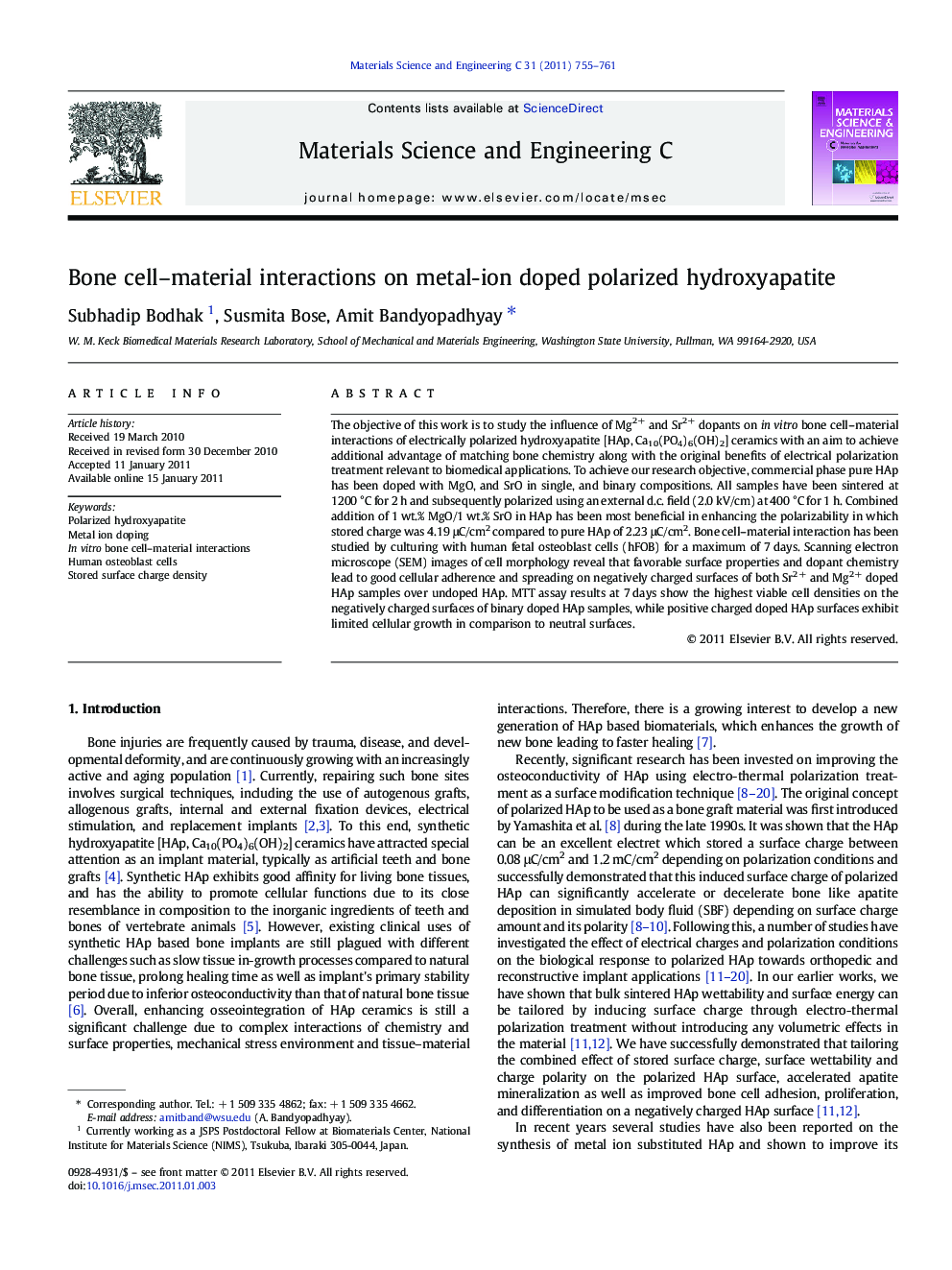| Article ID | Journal | Published Year | Pages | File Type |
|---|---|---|---|---|
| 1429795 | Materials Science and Engineering: C | 2011 | 7 Pages |
The objective of this work is to study the influence of Mg2+ and Sr2+ dopants on in vitro bone cell–material interactions of electrically polarized hydroxyapatite [HAp, Ca10(PO4)6(OH)2] ceramics with an aim to achieve additional advantage of matching bone chemistry along with the original benefits of electrical polarization treatment relevant to biomedical applications. To achieve our research objective, commercial phase pure HAp has been doped with MgO, and SrO in single, and binary compositions. All samples have been sintered at 1200 °C for 2 h and subsequently polarized using an external d.c. field (2.0 kV/cm) at 400 °C for 1 h. Combined addition of 1 wt.% MgO/1 wt.% SrO in HAp has been most beneficial in enhancing the polarizability in which stored charge was 4.19 μC/cm2 compared to pure HAp of 2.23 μC/cm2. Bone cell–material interaction has been studied by culturing with human fetal osteoblast cells (hFOB) for a maximum of 7 days. Scanning electron microscope (SEM) images of cell morphology reveal that favorable surface properties and dopant chemistry lead to good cellular adherence and spreading on negatively charged surfaces of both Sr2+ and Mg2+ doped HAp samples over undoped HAp. MTT assay results at 7 days show the highest viable cell densities on the negatively charged surfaces of binary doped HAp samples, while positive charged doped HAp surfaces exhibit limited cellular growth in comparison to neutral surfaces.
